“How fast can it go?”
There are many ways to measure automotive excellence, but top speed is the one everybody secretly cares about the most. Aldous Huxley was right about speed being the only truly modern sensation. He left out the part about how much fun it is.
These 25 cars are more than just fun, though, they’re the fastest production cars on the planet. The emphasis here is on “production” — racers and one-off custom jobs need not apply. We also tried to limit our selections for the fastest cars in the world to those with claimed top speeds that have been generally recognized as legitimate by the automotive media and sanctioning groups.
There are also some cars on the horizon that appear ready to knock some names off this list. SSC still hopes to reclaim the title of world’s fastest car with its 1,350-horsepower Tuatara, and Bugatti will officially test the Chiron’s top speed in 2018. For now, though, these are the fastest cars that can legally sport a license plate.
Hennessey Venom F5 (301 mph, claimed)


In terms of top speed, Hennessey Performance Engineering is running roughshod over the competition. Hennessey’s Venom GT — which recorded its monumental, yet unofficial 270-mph run in 2014 — sat atop this list for some time, but three years later, Hennessey challenged the boundaries of physics yet again.
Boasting a claimed top speed of 301 mph, the Venom F5 smashes the previous top speed figure by more than a school zone speed limit. To do so, Hennessey started with an all-new, 2,950-pound carbon fiber chassis (the Venom GT is based on the Lotus Exige), and bolted a 1,600-hp, 7,4-liter, twin-turbo V8 to it. The results are absolutely astonishing, as the car can reportedly go from 0 to 249 to 0 mph in less than 30 seconds total. Hennessey has yet to confirm its top speed with the Guinness Book of World Records, so the Koenigsegg Agera RS remains the official fastest car in the world … for now.
Koenigsegg Agera RS (278 mph)
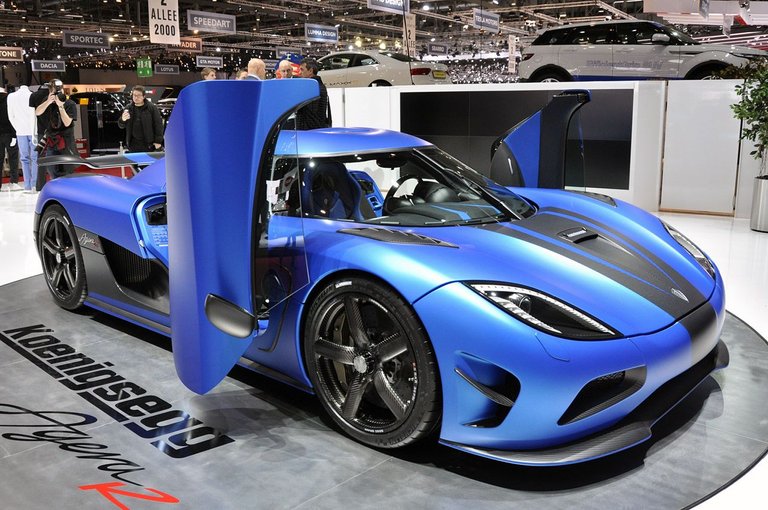
The Koenigsegg Agera RS is officially the fastest car in the world, and yet it sits in the second position on our list. Why?
In terms of spec sheets, Hennessey’s Venom F5 is more impressive. Its claimed top speed of 301 mph obliterates everything else on this list by a significant margin, but Hennessey hasn’t verified its numbers with the Guinness Book of World Records. Koenigsegg has, so even though it gets the silver medal here, in the real world, the Agera RS is the true speed king.
To set the official record, Koenigsegg asked the Nevada Department of Transportation to close an 11-mile stretch of Route 160 between Las Vegas and Pahrump. On public roads, the 1,160-hp Swedish supercar hit 284.55 mph during its first run and 271.19 mph during the second, which averages out to 277.9 mph.
Hennessey Venom GT (270 mph)

Because of its handbuilt nature, there’s also some debate about whether the Venom GT qualifies as a production car. While it’s top speed is undoubtedly amazing, Hennessey’s monster wasn’t recognized as the world’s fastest car by the Guinness Book of World Records.
Bugatti Chiron (261+ mph)

The Bugatti Veyron was a monumental feat of engineering, a supercar whose performance was so marvelous, Top Gear presenter James May compared it to the automobile equivalent of the Concorde. After 10 years of production, the Volkswagen Group has unveiled the Veyron’s successor, the Bugatti Chiron.
Named for a legendary centaur in Greek mythology, the Chiron is intended to improve upon the Veyron in every way. Hitting 261 mph using street legal settings, the 1500-hp Chiron is like a beast in chains. On the racetrack, Bugatti aims to break those chains, as well as the current speed record. For now, its top speed remains a mystery to the public. Although the Chiron is built like a race car, one needn’t be a professional to operate it — the car is engineered to automatically adjust its machinery as the speed increases or decreases, ensuring optimal performance.
The Chiron will not be a mere speedster, but a comprehensive luxury vehicle as well. Beyond a beautiful leather interior, the car also sports a decadent sound system, with a diamond diaphragm inside each speaker. The dashboard features high-resolution digital displays that will adjust as the car’s speed changes, showing only crucial information at higher speeds. The Chiron looks to be a king among supercars, which is fitting, as kings will be among the few to obtain one — only 500 will be released for the first generation, and they cost a staggering $2.6 million each.
Bugatti Veyron Super Sport (268 mph)

When Volkswagen purchased the Bugatti brand, it had one goal: build the fastest production car in the world. The original Veyron achieved that goal, and with a price tag of $1.7 million and a quad-turbocharged W16 engine producing 1,000 hp, it also boasted the most superlatives of any production car.
Yet the Veyron was soon dethroned by the SSC Ultimate Aero, so Bugatti came back with the Veyron Super Sport. This Veyron-plus has 1,200 hp, and numerous aerodynamic changes meant to help gain a few extra miles per hour.
With a top speed of 268 mph recorded at Volkswagen’s Ehra-Lessein test track, the Veyron Super Sport was once recognized as the world’s second fastest production car by Guinness. The related Veyron Grand Sport Vitesse is also the world’s fastest open-topped car, with a top speed of 254 mph.
SSC Ultimate Aero (256 mph)

Briefly, the might of the Volkswagen Group and the prestige of the Bugatti name were bested by a car company no one had ever heard of.
Shelby SuperCars (SSC) has nothing to do with Carroll Shelby of Cobra fame, but for a moment its Ultimate Aero was the fastest production car in the world. It hit 256 mph in 2007, beating the non-Super Sport version of the Veyron.
Helping it achieve that velocity is a 6.3-liter twin-turbocharged V8 with 1,287 hp. There are no electronic driver aids to help control that power either, creating a purer driving experience for those with talent, and a scenario for certain death for those without it.
Tesla Roadster (250 mph, claimed)
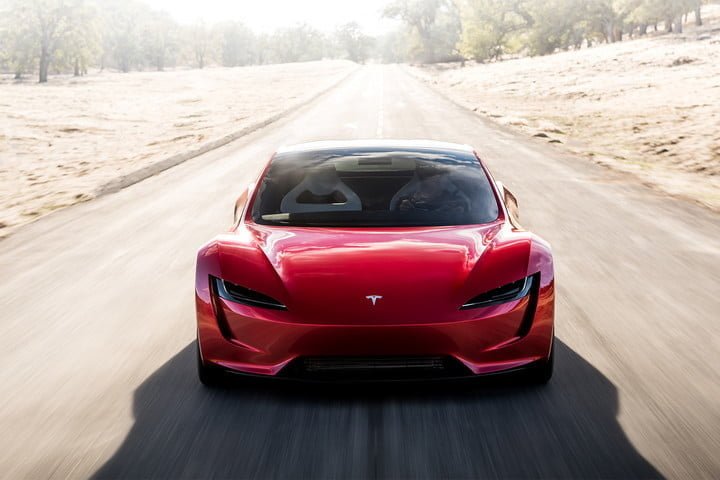
The original Tesla Roadster was a sports car based on the Lotus Elise, and although its performance was certainly impressive, it’s more known for establishing Tesla as a legitimate player in the automotive world. The new Roadster, with its bonafide supercar levels of performance, is another thing altogether.
Revealed as a surprise at the end of the Tesla Semi unveiling, the second-generation Roadster features the most impressive spec sheet of any EV before it — 0 to 60 mph in 1.9 seconds, 0 to 100 mph in 4.2 seconds, and a claimed top speed of 250 mph. While these numbers remain unconfirmed at this time, the Roadster’s 200kWh battery pack is absolutely massive and will undoubtedly push performance EVs to an entirely new level. The biggest battery you can get in a Model S or Model X is half that size, by the way.
In addition to the ridiculous acceleration and speed, Musk claims the Roadster will boast a range of 620 miles.
Saleen S7 Twin Turbo (248 mph)

Among performance addicts, the Saleen S7 is legend. There are several reasons for this — the exotic styling, insane performance, and incredible tuning potential to name a few — but much of the vehicle’s appeal is actually historical. Produced from 2000 to 2009, the S7 was America’s first mid-engined supercar.
It wasn’t just the first in the U.S. though; it’s one of the best supercars ever made. Built on a lightweight chassis crafted from aluminum and steel, the vehicle featured a hulking 7.0-liter V8 that produced 550 hp, allowing it to accelerate from 0 to 60 in 3.3 seconds. About halfway through its lifecycle, Saleen debuted the S7 Twin Turbo, which brought the car’s performance to near comical levels.
Now producing 750 hp, the vehicle could hit 60 mph in just 2.8 seconds before smashing the quarter-mile in 10.5 seconds. However, its most stunning statistic is its top speed of 248 mph, making it one of the fastest cars ever put to pavement.
Koenigsegg CCR (242 mph)

Swedish supercar builder Koenigsegg briefly held the “world’s fastest” title before being bested by the original Bugatti Veyron. Its CCR reached 242 mph at Italy’s Nardo Ring in 2005.
The CCR was essentially an earlier generation of the cars Koenigsegg is building today. It featured a 4.7-liter V8 of the company’s own design, a carbon-fiber body, and not much in the way of electronic aids.
Despite its impressive stats, the CCR’s moment in the spotlight was as brief as its claim on the world. It was soon supplanted by the CCX, and then by the current Agera. Koenigsegg says the Agera-based One:1 will top out at over 270 mph, but no one has tried it yet.
McLaren F1 (241 mph)

The F1 is more than just a former world’s-fastest car. With its carbon-fiber body, gold-lined engine bay, 6.1-liter BMW M V12, and center driver’s seat, it just might be the coolest car ever made.
Years before it attempted to take on Ferrari and Porsche with the MP4-12C, McLaren was known only as a successful race team in Formula 1 and the defunct Can-Am series. Yet its first road car wasn’t exactly an amateur effort.
McLaren intended to make the F1 the ultimate road-going supercar, but its design was informed by the company’s racing experience. The F1 even went on to a fairly successful racing career in its own right, winning the 24 Hours of Le Mans in 1995.
Pagani Huayra BC (238 mph)
No sane person would ever call the Pagani Huayra tame, because with an AMG-sourced biturbo V12 pushing less than 3,000 pounds, the Italian dynamo is the definition of a beast. The formula can always been improved though, and at the 2016 Geneva Motor Show, Pagani proved it by debuting the Huayra BC.
Lighter and more powerful than the standard Huayra, the BC’s engine was massaged to produce 789 hp, while total curb weight was slashed down to a paltry 2,645 lbs. That’s effectively the same weight as the latest Honda Civic Coupe with five times the power. It should come as no surprise, then, that the BC’s top speed is rated at a ridiculous 238 mph.
Zenvo ST1 (233 mph)
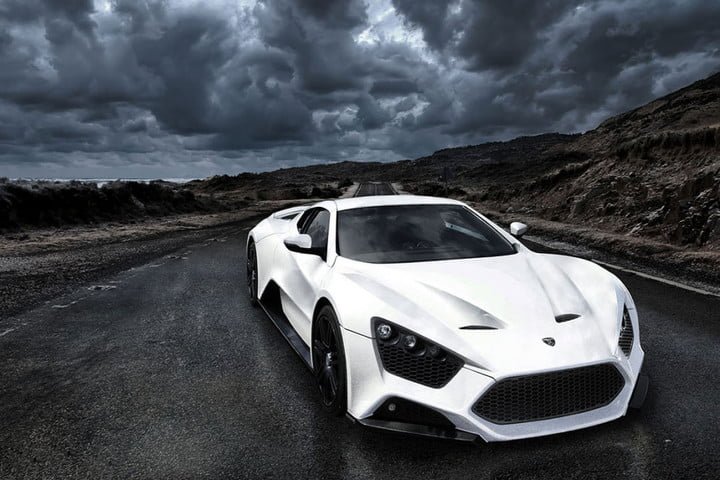
One of the only performance cars to come out of Denmark is also one of the fastest motorcars ever built. Assembled in Zealand, the Zenvo ST1 exhibits the height of Danish engineering prowess, as the car combines a 6.8-liter V8 with both a supercharger and a turbocharger to create 1,104 hp and 1,054 lb-ft. All of that power goes straight to the rear wheels, making the ST1 a handful for anyone outside of the professional racing scene. If you can get the tires locked up, though, the bullish coupe will shock you with raw ability.
Flat out, the ST1 is capable of reaching 233 mph given enough road, but it’s important to note its top speed is electronically limited. Without the digital nannies on board, we suspect the ST1 would be even faster in the top end, which is a scary thought indeed.
Noble M600 (225 mph)

When we think of British supercars, our minds usually turn to brands like McLaren, Aston Martin, and Jaguar, but there’s another carmaker that definitely deserves mentioning — Noble Automotive.
Noble rolled onto the scene in 1999, and has since carved out a small slice of automotive history by releasing several low-volume supercars. The most notable of the lot is the M600, which seemingly came out of nowhere in 2009 when it smashed the Bugatti Veyron’s time around the Top Gear test track. The car proved incredibly difficult to drive as it had very few electronic driver aids onboard, but its performance spoke for itself — 650 hp, 0 to 60 in 3.0 seconds, and a top speed of 225 mph.
The Noble may not have the bedroom poster looks of a Lamborghini, but clearly, the burly Brit has it where it counts. The brand has since launched a beautiful CarbonSport version with an exposed carbon fiber body as well as a convertible Speedster model.
Apollo Arrow (223 mph)

The 2016 Geneva Motor Show was a supercar-laden affair, but even among its spectacular rivals, the Apollo Arrow stood out. Wearing bright orange paint and a body sculpted like a dragon’s, the Arrow was and is a fantastic example of unrestrained design, and that philosophy applies to much more than just the styling.
The Arrow equips an Audi-sourced 4.0-liter biturbo V8 that has been tuned, tweaked, and tickled to produce a cool 1000 hp and 738 lb-ft, numbers that get more impressive when you consider the car’s low weight of 2,866 lbs. The math adds up pretty well in this case, as the Arrow can sprint to 60 mph in only 2.9 seconds and prance all the way up to 223 mph before running out of steam.
In early 2016, the Apollo Automobil brand rose from the ashes of Gumpert, a lovably unhinged manufacturer that brought us the brutal Gumpert Apollo. The Arrow is the successor to the ol’ Gumpert in many ways, because even though it’s been given a makeover, underneath the skin it’s as crazy as ever.
Lamborghini Veneno (221 mph)
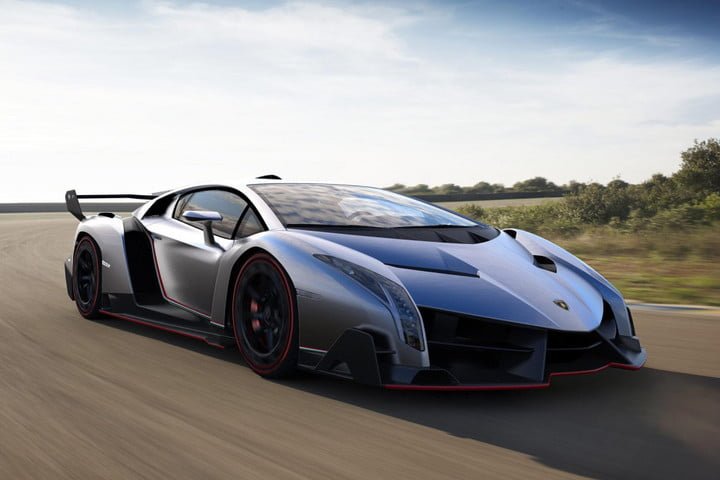
Sometimes you get what you pay for in life, and the Lamborghini Veneno proves it by appearing on our Most Expensive Cars in the World list as well as this one. That’s right, this $4.5-million supercar is actually quite the bargain.
With a 6.5-liter V12 producing 750 screaming Italian ponies, this venomous Lambo approaches superbike levels of performance with a 0 to 60 time of 2.9 seconds and a top speed of 221 mph. The car also features an array of racing-inspired gadgetry, such as a quick-shifting ISR semi-auto transmission with five different modes, pushrod suspension, and horizontal damper units. There’s also the comic book/stealth fighter styling, which is worth the price of admission for some.
If you thought $4.5 million was a lot, you’ll love this — in 2014, a Veneno sold in Germany for a whopping $6.5 million. Perhaps the word “bargain” was a bit of a stretch.
Aston Martin One-77 (220 mph)

The One-77 is the most extreme road-going Aston ever, and the fastest. It may share a front-engined layout with “regular” Astons, but the One-77 is a completely different animal.
Only 77 examples were made, and each sports a 7.30-liter V12 producing 750 hp. Like the chassis, it’s based on an engine used in lesser Aston production models, but it’s both lighter and more ferocious.
Aside from its performance and jaw-dropping good looks, the most remarkable thing about the One-77 may be that Aston was able to create a hypercar without making many compromises.
While it matches race-inspired mid-engined designs for performance, the One-77 still has the look and feel of something much more luxurious and well-rounded. It is, after all, the only front-engined car on this list.
The One-77 proves that incredibly fast cars don’t have to focus solely on performance. Its character is almost as special as its 220 mph top speed and limited production run.
Jaguar XJ220 (217 mph)

The XJ220 lost six cylinders and two driven wheels on the way to production, but it still managed to claim the title of fastest production car in 1992.
The original concept version featured a V12 engine and all-wheel drive, but the production model had to make due with a twin-turbocharged V6, and rear-wheel drive. Still, that was enough to get the XJ220 to 217 mph at Nardo, once engineers removed the rev limiter.
However, it wasn’t enough to solidify in the car’s place in history. Buyers weren’t as impressed by the production version as they were with the concept, and a weak early ‘90s economy tanked sales. Sometimes being the fastest just isn’t enough.
McLaren P1 (217 mph)
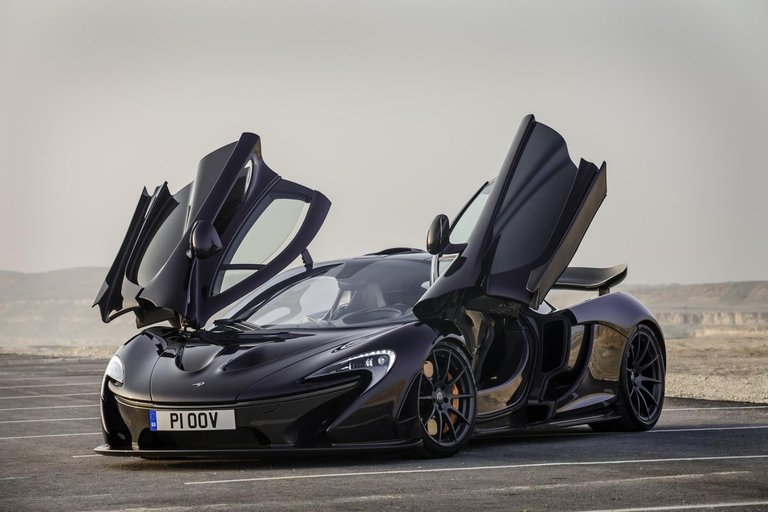
McLaren’s successor to the F1 isn’t as fast, but it’s much more high tech. Its 903-hp hybrid powertrain seamlessly blends electric and turbocharged V8 power, making the P1 one of the most capable performance cars ever made.
During the car’s press junket, McLaren said it emphasized the driving experience over outright top speed. Maybe the company didn’t think it could compete with Bugatti, or maybe it just thought organ-shredding lateral grip was a better way to torture customers than stratospheric speeds.
With a claimed lap time of around six minutes, the P1 also excels at a performance metric that’s almost become more important than top speed: the Nürburgring.
Ferrari LaFerrari (217 mph)

Along withe P1 and the Porsche 918 Spyder, the Ferrari LaFerrari is part of a trio of hybrid supercars that showed the world that performance cars don’t have to be (too) inefficient.
The Ferrari matches the McLaren for top speed and cleverness. Its 6.3-liter V12 is joined to a hybrid system modeled on the Kinetic Energy Recovery Systems (KERS) used in Ferrari’s Formula One cars. Not only does the LaFerrari give its driver 950 hp to play with, it also provides the instantaneous response of electric motors to get things going.
Lamborghini Aventador LP 700-4 (217 mph)
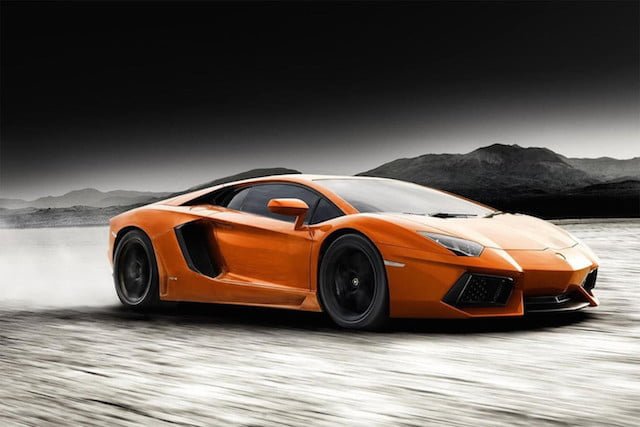
Breaking up the holy trinity of today’s most innovative supercars is a decidedly old-school bully, wielding one bludgeon of a powertrain. A 6.5-liter naturally aspirated V12 delivers 690 hp and 507 lb-ft of torque to all four wheels via a seven-speed dual-clutch transmission. In addition to its towering top speed, the Lamborghini Aventador will explode to 60 mph in 2.9 seconds.
Compared to its million-dollar top speed contenders, the Aventador’s $400,000 price tag is a bargain. For that, you get one of the most wild designs of the last decade and a spine-tingling howl through the supercar’s center-exit exhaust.
Porsche 918 Spyder (210 mph)

The last member of the so-called “holy trinity” to appear on our list, the Porsche 918 Spyder is everything we love about hybrid hypercars — incredible speed, high efficiency levels, and eye-opening applications of battery technology. It may be a hair less impressive than the McLaren P1 and Ferrari LaFerrari in the top end, but with a maximum speed of 210 mph, the 918 is no slowpoke.
The Spyder can obviously hold its own on the straights, but the German is at its most comfortable on the track, where its all-wheel drive traction and unbelievable acceleration combine to take on the record books. In 2013, the vehicle lapped the Nürburgring in just 6:57, becoming the third-quickest production car ever to do so. It also holds the production car lap record at Mazda Raceway Laguna Seca.
Great cars! Good article too.
Hi! I am a robot. I just upvoted you! I found similar content that readers might be interested in:
https://finance.yahoo.com/news/hold-butts-25-fastest-cars-175502271.html
Congratulations @edicks07! You have completed some achievement on Steemit and have been rewarded with new badge(s) :
Click on any badge to view your own Board of Honor on SteemitBoard.
For more information about SteemitBoard, click here
If you no longer want to receive notifications, reply to this comment with the word
STOP